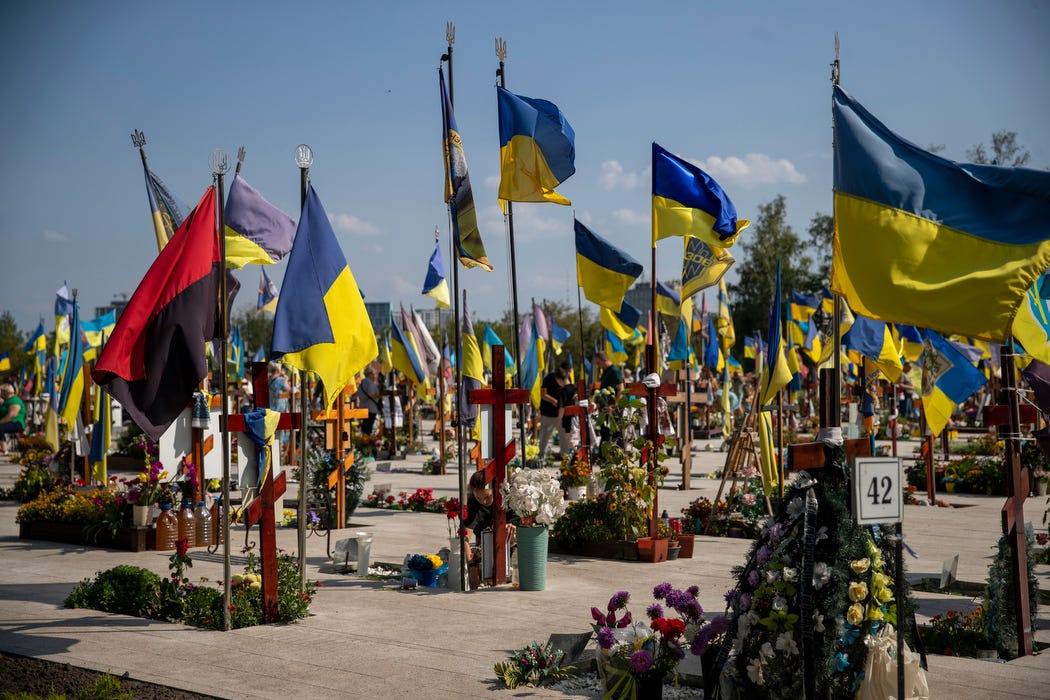Over the past week, the Western media has frantically pushed the narrative that Russia is suffering massive losses. Marco Rubio’s remarks in Kuala Lumpur a couple of days ago is a typical example:
One hundred thousand since January? But it is not just Rubio… The Economist provides a more modest estimate, but the key word is estimate:
As of July 9th our tracker suggests there have been between 900,000 and 1.3m Russian casualties since the war began, including some 190,000–350,000 deaths. That updates assessments from other sources, which put total casualties above 1m at the end of June. Our numbers suggest roughly 31,000 Russians may have been killed in the summer offensive so far, which began in earnest on May 1st.
There is too little data to generate a comparable live estimate for Ukraine. However, a catalogue of the known dead and missing from UALosses, a website, implies that between 73,000 and 140,000 Ukrainian soldiers have died since the invasion began.
Talk about lazy reporters. There is plenty of data out there if you simply do basic analysis. For example, start with social media. In the age of ubiquitous smartphones and social media platforms, it is impossible to hide death notices — aka obituaries — and pictures of funerals and graveyards. There are hundreds of images of Ukrainian funerals and of graveyards with a literal sea of Ukrainian flags fluttering over a vast expanse of freshly dug graves. Not so in Russia. There are a few, but nothing to match the quantity displayed on Ukrainian channels. Here is one example from the cemetery in Khmelnitsky.
Again, there are a few videos of some cemeteries in Russia, but nothing to match the scale of what we can see in Ukraine.
Western intelligence analysts have access to satellite imagery and the capability to look at cemeteries in both Russia and Ukraine and compare where the most new graves are being dug. I swear I wrote an article on this with those images, but I can’t find it. But I did make an interesting discovery while searching for it… Western satellites and media companies are doing nothing to make that comparison.
The following graph helps explain why. [Note: This bears an erroneous title.] This graph shows the number of Russian bodies exchanges for Ukrainian bodies since the start of the Special Military Operation:

In my previous article, I discussed the reason for the disparity in combat deaths… It is the fact that Russia enjoys an overwhelming advantage in firepower. Let’s look at just two weapons systems:
Artillery shells: Russia enjoys a lopsided advantage thanks to ramped-up domestic production (3-4.5 million shells annually) and massive imports (e.g., 9+ million from North Korea since 2023), while Ukraine is dependent entirely on Western aid (1.3-2 million annually). NATO’s Secretary General has conceded in public that Russia produces more artillery shells in three months than the US and the rest of NATO can produce in a year. Production numbers are relevant because Russia’s firing rate (10,000-15,000 shells/day) outpaces Ukraine’s (2,000-7,000/day), leading to a 5-10:1 disparity in some sectors in 2024. In 2025, that disparity has grown to a 23:1 disadvantage for Ukraine. In other words, Ukrainians hit by Russian artillery shells will have more casualties than Russians hit by Ukrainian shells, simply because the Russians are firing more shells.
Drones: Russia holds several key advantages in the use of drones for combat in the ongoing conflict with Ukraine, primarily stemming from its larger industrial base, foreign partnerships (e.g., with Iran for Shahed-type drones and China for components), and focus on mass production and deployment.
Superior Production Volume and Stockpiles: Russia aims to produce 2-4 million drones in 2025 (including 2 million FPV models and 30,000 long-range/decoy types), outpacing Ukraine’s targets in certain categories despite Ukraine’s overall goal of 4.5 million. This includes ramping up to 300-500 long-range drones per day, bolstered by Chinese components, giving Russia a 3:1 edge in daily output for some types. Ukraine produced 2.2 million in 2024 (a 900% surge), but Russia’s cumulative stockpiles (estimated 1.5-2.5 million active) enable sustained operations.
Massive Barrage Capabilities: Russia routinely launches large-scale drone assaults (e.g., record 728 drones in one night in July 2025, up from 2,264 in H1 2024 to 22,495 in H1 2025), overwhelming Ukrainian air defenses and destroying key facilities.
Technological Adaptations for Resilience: Russia has gained an edge with fiber-optic cable-guided drones (e.g., Lancet variants), which are resistant to electronic jamming—a key Ukrainian countermeasure. These “low-tech” innovations have been called game-changers, allowing Russia to bypass EW systems where Ukraine previously dominated. Additionally, Russia’s integration of AI and machine vision in drones enhances targeting, though Ukraine leads in autonomous swarms.
Foreign Supply Chains and Sustainability: Partnerships with Iran (thousands of Shahed imports annually) and China (components for 70% of drones) provide Russia with a reliable influx, evading sanctions and sustaining high usage rates. This contrasts with Ukraine’s reliance on Western aid and domestic firms (200+ companies), which face funding volatility despite a 22-fold increase in long-range drone output from 2023 to 2024.
Battlefield Integration and Attrition Edge: Russia uses its drone superiority to support infantry advances, forcing Ukraine into defensive adaptations like motorcycle evasions. Russia’s drones enable a 10:1 attack ratio in some sectors, compounding its manpower advantage, and increasing the number of Ukrainian casualties.
There is not a single weapon system where Ukraine can claim to have the advantage. Russia is employing two additional weapons systems that Ukraine does not have… hypersonic missiles and combat aircraft. Before you holler, “Wait a minute… Ukraine has combat aircraft,” Russia enjoys air supremacy, while Ukrainian aircraft are shot down with regularity. Oh yeah, almost forgot… Russia’s fleet of bombers and submarines regularly launch missiles that Ukraine is incapable of destroying.
Whatever casualties Ukraine is inflicting on Russian forces, it pales in comparison to what Ukraine is losing because of the overwhelming advantage in fires that Russia has. I guess Marco Rubio did not get that briefing.
Reprinted with permission from Sonar21.

